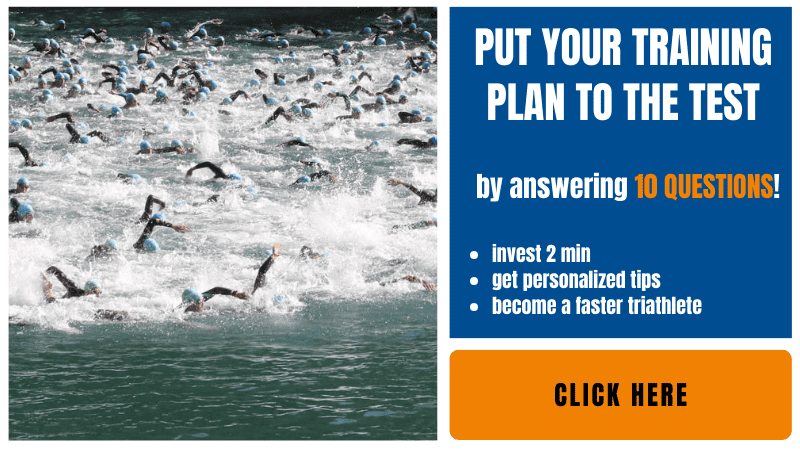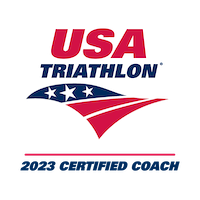A wetsuit is, for me, the most challenging triathlon equipment to buy. I find that wetsuit brands are sponsoring “reviewers” so much that it makes it hard to know which wetsuits are really worth it.
In this article, I will share the 8 things you should consider before you buy a triathlon wetsuit and share my recommendation.
1. LOOK FOR A SPECIFIC TRIATHLON WETSUIT, NOT ANY WETSUIT
There are a few different types of wetsuits on the market. Some are specifically made for surfing, others for diving, and some for triathlon. You can’t really use them interchangeably.
Each athlete wearing those has different needs that are addressed differently. For example, some sports require thicker neoprene for more warmth, others need more flexible material, and finally, you might be limited by rules.
In triathlon, for example, the thickness of a wetsuit cannot exceed 5mm.
2. YOU CAN RENT TRIATHLON WETSUITS
As we will see later on in this article, triathlon wetsuits are not cheap. A good option for anyone starting triathlon is to rent one. You, of course, want to reserve it ahead of time and ideally try it before your race. I borrowed one for $25 for an entire weekend.
I find it a great way to avoid such a significant expense when you start triathlon, and at the same time learn more about the wetsuit itself.
3. A WETSUIT MIGHT BE COMPULSORY ON RACE DAY
Depending on the water temperature and the country where you will race, you might not be able to take part in a race without a wetsuit.
I wrote an entire article about the swim rules, and especially the common wetsuit rules, you can check it here.
4. FIND A TRIATHLON WETSUIT THAT FITS YOU
You want to make sure you buy a wetsuit that matches your body type and swimming style.
- Body type: have a look at the different sizing options. The more options they have, the more chance you have to find one which will fit you. All manufacturers have a sizing guide based on height, weight, waist measurement, or a combination of those. Do not hesitate to reach out directly to the manufacturers if you are unsure. They will help you.
- Swimming style: you will find different kinds of wetsuits to accommodate different types of swimmers. Some will have extra buoyancy in their legs for swimmers who tend to have their legs sink while swimming, some extra flexibility, and some neutral.
A well-fitted triathlon wetsuit feels relatively tight but does not give you any restrictions on your chest and shoulders. You should feel comfortable in it.
5. THE THICKNESS OF THE NEOPRENE CAN DIFFER
The thickness of the neoprene will obviously be under the 5mm rule, but it won’t be the same everywhere on the wetsuit.
Generally, the arms, shoulders, and calves are where the neoprene is the thinnest.
Some brands will create specific wetsuits for colder water temperatures, hence playing with the thickness of the neoprene.
6. CHECK THE QUALITY OF THE NEOPRENE AND LINING
That is by far the most important criterion for choosing a wetsuit. Having a good neoprene and lining is what makes a wetsuit really flexible.
There are some standards for the neoprene (for Yamamoto rubber, for example, a 40 will be more flexible than a 39), but nothing really for the lining.
It is important to note that even if a wetsuit is made of high-quality rubber, it doesn’t mean that all the neoprene will be from this material. Often, you will find different types of neoprene on a single wetsuit.
As you can imagine, it is pretty tricky (not to say impossible) to compare wetsuits on your own online. The best would be to do it the “old-fashioned way” and touch the wetsuits in a shop. Then, you should be able to feel the difference in flexibility.
7. THE SEAMS HAVE THEIR IMPORTANCE
To assemble the different parts of a wetsuit, the manufacturers will use various techniques. It is essential to know what you are looking at, as a bad quality seam will let water in more easily and create more chaffing.
The easiest and cheapest is to stitch the neoprene pieces together. It will, however, create thousands of tiny holes that can let the water enter.
Another option is to stitch a portion of the neoprene layer (hence no hole) and add glue on top of that stitch. It is a better sealing option but also a more expensive one. There is an excellent article from Wetsuitwarehouse on seams and stitches. I highly recommend you read it.
8. A TRIATHLON WETSUIT COSTS BETWEEN $150 AND $1,600
Most brands will offer different price categories. Most of the time (but not always!), a more expensive triathlon wetsuit will be of better quality.
If you want high-quality neoprene, lining, and seams, it will come with a hefty price tag.
MY TRIATHLON WETSUIT RECOMMENDATION
Disclaimer: The Triathlon Tips of My Tri World are reader-supported. When you buy through links, I may earn an affiliate commission.
If you are on your way to your first triathlon, I would highly suggest renting one, so you can test it and participate in a race without breaking the bank.
Once you are ready to buy a new wetsuit, look at specific shops in your area that have several brands and models. You will be able to feel the difference in terms of flexibility.
I didn’t have this chance for my first wetsuit (no name bashing), there was only one brand available, and I didn’t know what to look for. I ended up with an inflexible wetsuit. I hope that with all the information in this article, you won’t make this mistake 😉
A triathlon wetsuit is one of the 20 essential triathlon gear on our list for race day, have a look at this article to find out more about the 19 others.



